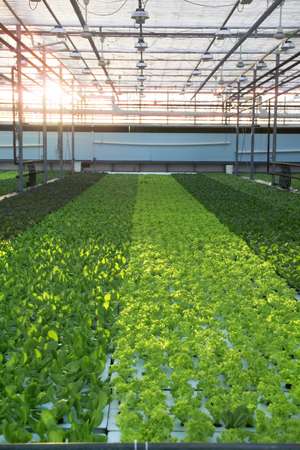The high cost of closed-system urban farming based on electrically generated photosynthetic light

(Phys.org) —It seems a sensible solution to urban space constraints and a desire for increased local food production: transform abandoned warehouses into indoor farms, or construct purpose-built vertical food factories.
But Louis Albright, an emeritus professor of biological and environmental engineering who helped pioneer controlled-environment agriculture, warns that these "high in the sky" proposals intended to reduce food miles and rejuvenate communities may prove to be "pie in the sky" concepts with detrimental impacts on the environment.
In a Feb. 10 lecture hosted by the Department of Horticulture, Albright argued that closed-system urban farming based on electrically generated photosynthetic light would result in food production with high cost, large energy use, a giant carbon footprint and incompatibility with some forms of renewable energy.
He estimated that around 8 pounds of carbon dioxide would be generated at the power plant per pound of lettuce in such a system – each head of lettuce would create, at the power plant, enough CO2 to fill three 55-gallon drums, and the carbon emissions generated by growing 4,000 heads of lettuce would be equivalent to the annual emissions of a passenger car.
Other crops would be even less sustainable, Albright said. The carbon footprint of tomatoes grown in a food factory would be more than double that of lettuce, and it would cost about $23 per loaf of bread to pay the electricity bill (at $0.10 per kilowatt-hour) for wheat grown in a warehouse farm, he estimated.
A better solution would be installing more traditional horizontal greenhouses around the perimeter of urban areas, he suggested. These "peri-urban" greenhouses would still reap many of the benefits of urban infrastructure – such as water, power, high-speed roads and other transportation options – while avoiding the phytotoxic effects of urban air pollution, and they would capture the most effective, cost-efficient source of energy for plants: the sun.
Glazed greenhouse windows aren't the perfect transmitters of solar energy – about 30 percent of light gets lost in cloudy Ithaca – but that 70 percent efficiency makes a huge difference, Albright said. In the case of lettuce, it reduces CO2-equivalent emissions to around 2.7 pounds per head – 300 percent less than in a completely closed system.
"LED technologies are improving, and the costs are shrinking, but don't believe the Internet," Albright said. "Even if they were to double their efficiency, we would still be looking at 4 pounds of CO2 per head of lettuce."
As for solar panels, they take up too much space to deliver the amount of energy needed – a one-acre crop of lettuce being grown in Ithaca in optimized conditions would require 9.3 acres of panels, he said. In addition, solar availability may not synchronize with need, leading to energy loss and the need for supplemental energy at other times.
"Must we violate the laws of physics to make it work? I'd prefer not to," Albright said.
Local food production is not always the most sustainable option, especially when growing crops out of season, Albright added. Even under optimal conditions, lettuce produced in Ithaca greenhouses has a carbon footprint that is barely better than lettuce transported from 3,000 miles away, he said.
"There's a lot of sentimental attachment to local food production, and the quality is likely to be better, but the phrase 'food miles' shouldn't scare people because the alternative isn't always better. A system viewpoint is critical," Albright said.
Provided by Cornell University















